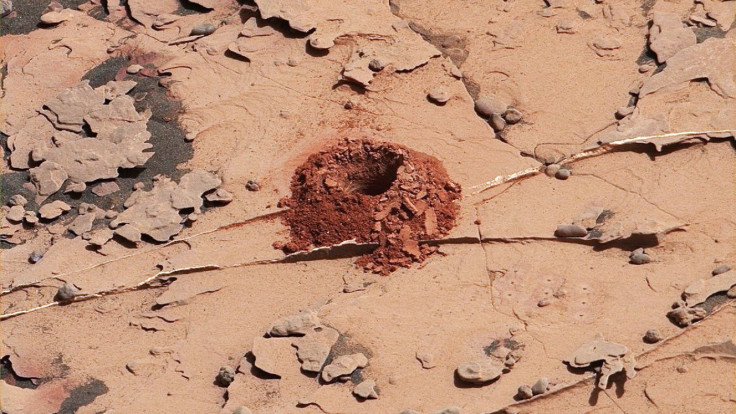NASA's Curiosity Rover On Mars Can Once Again Drill Into Rocks

NASA precious Curiosity rover is once again drilling the surface of Mars. The robotic vehicle used a new drilling technique May 20 and penetrated into a Martian rock named “Duluth” for the first time in more than a year.
Though drilling a hole in a rock appears to be no big thing, especially for a technology-rigged rover strolling on the red planet, it’s a big milestone for NASA. The engineers worked hard for months to make sure the latest method works appropriately and overcomes the mechanical problems witnessed almost two years ago.
Curiosity’s original drilling mechanism went offline in 2016, taking away the vehicle’s critical ability to analyze powder samples from Martian rocks. According to a Gizmodo report, first electrical issues plagued the drill’s hammering mechanism and then the vehicle’s drill feed malfunctioned in December that year.
All of this restricted the drill’s upward and downward movement and kept the rover from extracting rock samples. Curiosity’s mission was severely affected, as drilling out rock samples from the surface of the red planet was crucial for the study designed to understand its history. The rover has two labs to conduct chemical and mineralogical analyses of rock and soil samples, but the agency couldn’t use them to the fullest.
However, all of that changes now because Curiosity is back at drilling and boring into Martian rocks. The rover team back at Earth worked on a percussive method called Feed Extended Drilling. As part of this technique, the force rover’s extended robotic arm is leveraged to push the drill forward into the rock, like how a human drills into a wall at home. Several tests were conducted at home to see if the method would work and it did.
Curiosity successfully drilled a two inches deep and nearly 0.6 inches wide hole on Duluth and extracted powder from it.
"The team used tremendous ingenuity to devise a new drilling technique and implement it on another planet," Curiosity Deputy Project Manager Steve Lee said in a statement. "Those are two vital inches of innovation from 60 million miles away. We’re thrilled that the result was so successful."
The team had been eager to get the drilling mechanism up and running before the rover moves on from its current location near the Vera Rubin ridge, which was close to rock targets like Duluth.
The test was successful, but it is just the beginning and the ground team at NASA has a lot of work to do in order to improve the process as far as possible. The agency is also looking forward to work on delivering samples from the drill to the two onboard labs.
"We've been developing this new drilling technique for over a year, but our job isn't done once a sample has been collected on Mars," Tom Green, a systems engineer who helped develop and test Curiosity's new drilling method, said in the statement. "With each new test, we closely examine the data to look for improvements we can make and then head back to our test bed to iterate on the process."
© Copyright IBTimes 2024. All rights reserved.





















